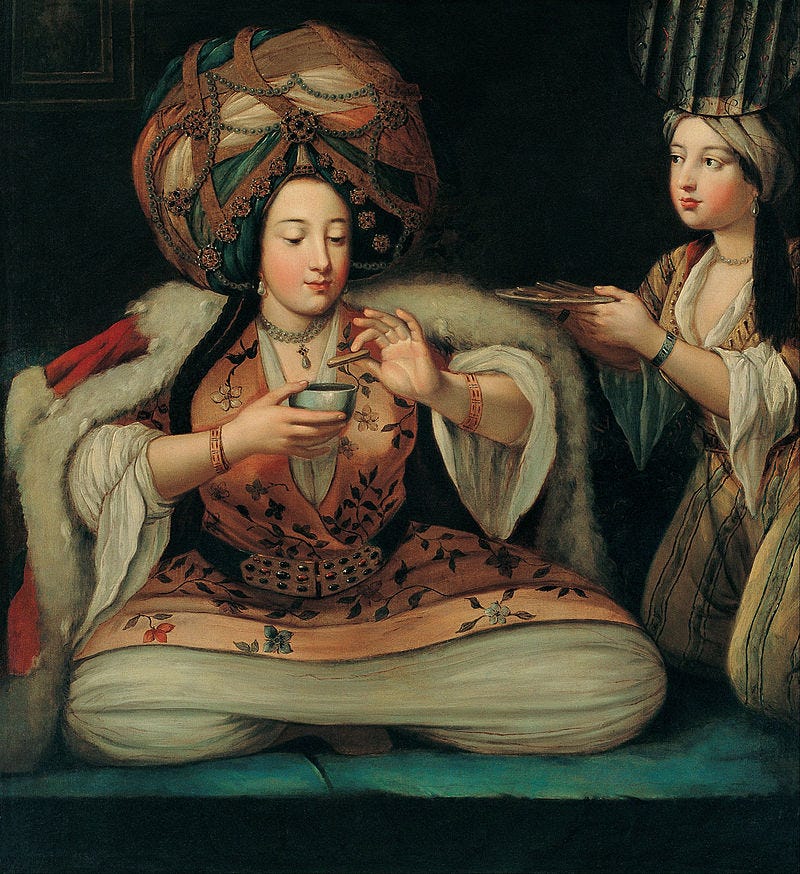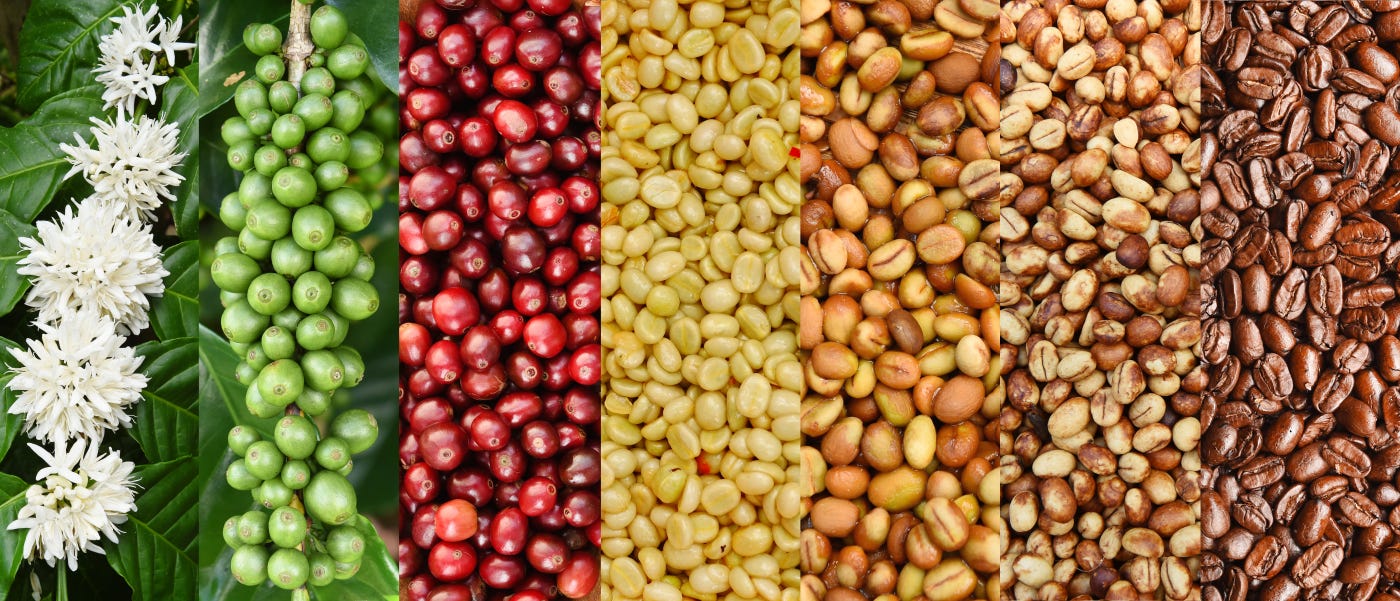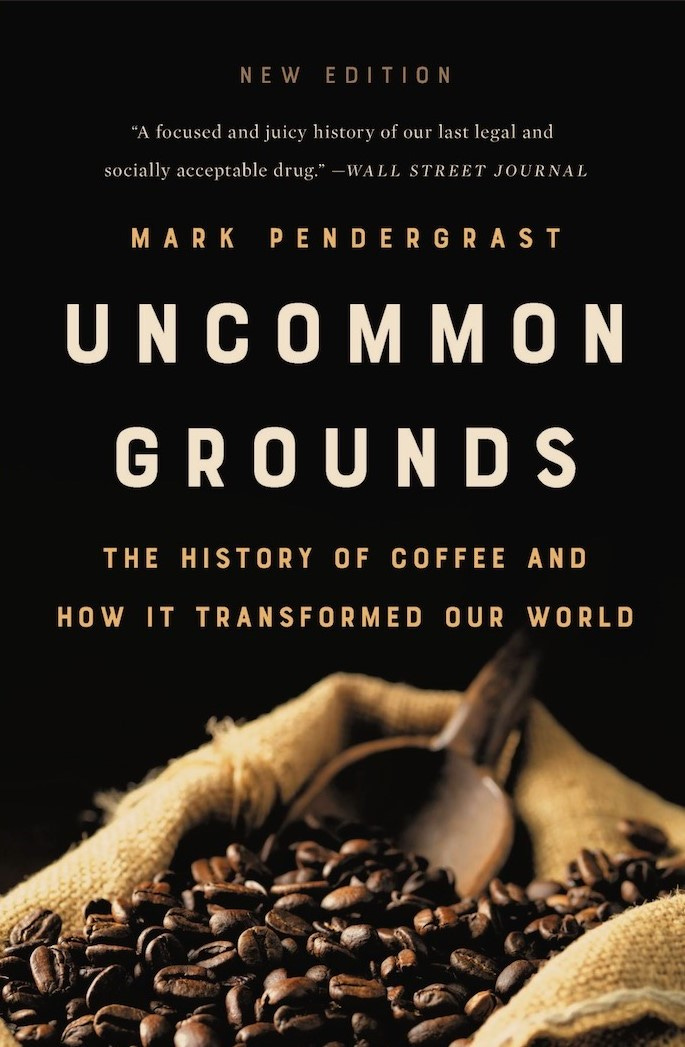From Bean to Brew and Beyond
Coffee's Influence on Culture and Creativity
Exploring Life and Literature
Sometime between 0400 and 0500 each morning, my internal alarm wakes me. I throw on some clothes, stumble to the kitchen, and start a pot of coffee. While waiting, I feed the dog, rub the sleep out of my eyes, and check the weather. The sound and smell of coffee brewing are familiar and comforting. My mind slowly wakes. This magical black liquid is the simplest pleasure in my life. I drink two cups early each morning. Perhaps a third mid-morning if I feel frisky. Coffee is not just a drink. It is a cultural phenomenon. Its fascinating history is tied to artists and thinkers in a way that other food and drinks are not. Today, we travel beyond the bookshelf to learn more about this simple but majestic drink.
Few drinks are a part of the fabric of culture quite like coffee. It’s more than a beverage; it’s a ritual, a social experience, a mental stimulant, and a source of inspiration for writers and thinkers. Coffee’s rich history spans continents and centuries, affecting the evolution of culture, economics, politics, and literature. Today, coffee shops are hubs of conversation, creativity, and connection, where people seek the comfort of tradition and the spark of new ideas.
Desiring to learn more about my favorite beverage, I picked up a copy of Uncommon Grounds: The History of Coffee and How It Transformed Our World by Mark Pendergrast. This engaging and thoroughly researched chronicle traces the fascinating journey of coffee from its discovery in the ancient coffee forest of Ethiopia to its current status as one of the world’s most valuable and widely consumed commodities. Pendergrast presents a comprehensive picture showing how coffee is connected to pivotal cultural, economic, and political moments in history, beginning with its spread from the Arab world to Europe and the Americas.
The origins of coffee are steeped in myth. Ethiopian folklore tells of a goat herder named Kaldi who discovered coffee in the 9th century when he noticed his goats becoming unusually energetic after eating the berries from a particular plant. Curious, Kaldi tried the berries himself, experiencing the same surge of energy.
Historical evidence suggests that coffee cultivation and trade began in Ethiopia and spread to Yemen, where it became central to Sufi rituals to stay awake during long nights of prayer. By the 15th century, coffee reached the city of Mocha on the Arabian Peninsula and, from there, was exported throughout the Muslim world, including North Africa, Persia, and Turkey.
By the 16th century, coffee reached Europe, and its popularity soared. Coffeehouses became the epicenters of intellectual exchange. These establishments, often called “penny universities” in England because of the low cost of admission (the price of a cup of coffee), were where artists, thinkers, and writers congregated to discuss politics, philosophy, and literature. Coffeehouses were incubators of new ideas, contributing to the intellectual climate of the Enlightenment.
As the drink’s popularity spread, coffeehouses became influential across Europe and the Middle East, from Venice to Vienna to Istanbul. They were places where news circulated and people from different classes could gather, leveling the social playing field in previously unimaginable ways.
Today, coffee is a cultural cornerstone. In the age of globalization, it connects people across borders, economic classes, and social divides. Coffee shops are modern-day communal spaces where people go to work, meet friends, or enjoy a moment of solitude. The rise of chains like Starbucks and the global coffee shop trend underscores coffee's role as a social equalizer, where anyone can enjoy the same experience regardless of background.
Coffee also plays a central role in shaping modern work culture. In many workplaces, the idea of a “coffee break” is sacred, a short respite offering social interaction and a quick energy boost. In tech-driven cities like Seattle and San Francisco, coffee fuels innovation, powering entrepreneurs, coders, and creatives through long hours of work.
Coffee and literature have shared a profound relationship. Writers have famously relied on the drink to fuel their creativity. The French philosopher Voltaire drank as many as 50 cups of coffee daily, while Honoré de Balzac consumed copious amounts of the beverage to fuel his long writing sessions. Coffee played a role in the daily routines of many literary figures, from Søren Kierkegaard, who meticulously prepared his coffee using sugar and boiled it to perfection, to Ernest Hemingway, who frequented Parisian cafes for inspiration while writing A Moveable Feast. The drink’s stimulating effects and centrality to social spaces like cafes made it a favorite companion for writers throughout history.
The link between coffee and literature extends beyond individual writers to entire literary movements. In the 18th century, coffeehouses in England were gathering places for poets, novelists, and essayists. These establishments provided a public forum for exchanging ideas, many of which found their way into print. In Paris, the famed Café de Flore and Les Deux Magots were the haunts of writers like Jean-Paul Sartre and Simone de Beauvoir, who debated philosophy and literature over cups of coffee. These Parisian cafes were crucial in developing existentialism and post-World War II intellectual thought. Today, coffeehouses remain important spaces for writers and thinkers to collaborate and find inspiration.
The journey from bean to brew begins on the farm. Most coffee comes from two species of coffee plants: Coffea arabica and Coffea canephora (commonly known as robusta). Arabica beans, considered higher quality, thrive in high-altitude regions with tropical climates, while robusta beans are hardier and can grow at lower altitudes. The cultivation process is meticulous as coffee trees take several years to mature and bear a fruit known as cherries. These cherries are harvested when they turn a deep red, either by hand or mechanically, depending on the terrain and the farm’s scale. The cherries contain two beans: seeds that will eventually be roasted and ground to make coffee.
Once harvested, the cherries are processed to extract the beans. There are two primary methods of processing the beans. The dry method, involves spreading the cherries out in the sun to dry for several weeks. In contrast, the wet method removes the cherry’s pulp before fermenting the beans in water, which leads to a cleaner taste in the final brew. After processing, the beans are dried, naturally or mechanically, and sorted by size and weight. The last step before roasting is hulling, which removes the remaining layers of the coffee cherry, revealing the green coffee bean inside.
Roasting unlocks coffee’s flavor. The beans are heated to temperatures between 370°F and 540°F (188°C to 282°C), causing them to undergo a chemical transformation known as the Maillard reaction. This gives roasted coffee complex flavors, from caramel and chocolate notes to fruity or floral undertones. Different roasting levels—from light to dark—can dramatically alter the flavor profile. Light roasts are more acidic and highlight the bean’s original characteristics, while dark roasts bring out bold, smoky flavors.
Brewing is the final stage in the journey from field to cup, but before that, the beans must be ground. The grind size—whether coarse, medium, or fine—depends on the brewing method. A French press requires a coarser grind, while espresso machines require a fine grind to create a concentrated shot of coffee. Brewing methods are as diverse as the cultures that enjoy coffee. Drip brewing, espresso, French press, pour-over, and cold brew are just a few ways coffee can be prepared. Each method extracts different flavors, giving coffee drinkers endless experiences from the same beans.
The production of coffee has considerable environmental impacts and its global demand has led to intensive farming practices that strain ecosystems, contribute to deforestation, and increase carbon emissions. Understanding these consequences is crucial for fostering sustainable coffee practices.
Coffee is traditionally grown in shaded environments beneath the canopy of tropical forests. However, many coffee farms have shifted to “sun-grown” coffee to meet rising demand, where forests are cleared to make way for large monoculture coffee plantations. This deforestation destroys habitats for countless species, particularly in biodiversity-rich regions like Central and South America, and contributes to soil degradation and increased carbon emissions.
The water-intensive nature of coffee processing strains local water resources in regions that already suffer from water scarcity. If not properly treated, coffee processing wastewater pollutes local water bodies, as it contains high levels of organic material. This leads to oxygen depletion in aquatic ecosystems, harming fish and other wildlife.
One of the most effective ways to reduce the environmental impact of coffee farming is to return to traditional shade-grown methods. Shade-grown coffee is cultivated under the canopy of native trees, preserving forest ecosystems and protecting biodiversity. These shaded systems also help improve soil health by reducing erosion and providing natural organic matter in leaf litter.
Agroforestry, where coffee is grown alongside other crops or trees, can help restore balance to ecosystems by encouraging biodiversity and improving water retention in the soil. It also provides additional income sources for farmers by allowing them to harvest fruit, nuts, or timber from the trees that grow alongside their coffee plants.
Organic coffee farming avoids the use of synthetic fertilizers, pesticides, and herbicides, which can harm the environment. Organic farming practices emphasize the use of natural methods to control pests and enrich the soil, such as composting and cover crops. These practices reduce the risk of water contamination and help maintain soil fertility over time, making farms more resilient to climate change.
Some certification programs, such as USDA Organic, Rainforest Alliance, and Fair Trade, require farmers to adhere to specific environmental standards, including limited or no use of harmful chemicals.
Improving water management is critical for reducing coffee production's environmental footprint. Techniques such as water-efficient wet processing methods or even switching to the dry processing method, where possible, can significantly reduce water consumption. Wastewater treatment systems can help prevent contamination of local water sources. Some coffee farms are using closed-loop systems, where water is recycled and reused throughout production, reducing the overall demand for freshwater resources.
For consumers, one of the simplest ways to support more sustainable coffee production is by choosing coffee that is certified by organizations like Fair Trade, Rainforest Alliance, or Bird-Friendly. These certifications ensure that coffee is produced under environmentally responsible and socially equitable conditions, benefiting both ecosystems and farming communities.
The environmental impacts of coffee production are undeniable, but by shifting toward more sustainable practices, we can reduce the harm while continuing to enjoy one of the world’s most beloved beverages. Consumers have a role to play in supporting sustainable coffee by making informed choices and advocating for environmental responsibility in the supply chain.
Pendergrast’s book Uncommon Grounds painstakingly details how coffee cultivation and trade impact economies and communities, especially in the developing world. From Brazil’s vast coffee plantations to the complex trade relations between producers and consumers, it reveals how coffee production is both a source of prosperity and exploitation. The book also explores the environmental and human toll of coffee production, particularly the exploitation of labor in coffee-growing regions.
The author doesn’t shy away from addressing the ethical issues surrounding coffee, both economic and environmental. These sections provide a sobering look at the issues involved in the global coffee trade. However, he also vividly describes how coffee became woven into the fabric of daily life, from the rituals of brewing in homes and cafes to its representation in art and literature.
The development of coffee culture over the decades reflects broader societal shifts, including consumers' evolving taste preferences and the increasing importance of sustainability and ethical sourcing. Pendergrast skillfully balances historical depth with modern relevance, making seamless connections between the past and present.
Pendergrast’s thorough research is evident in the extensive detail he provides. However, the sheer volume of information can sometimes be overwhelming for the casual reader. At points, the narrative slows under the weight of historical facts, and the transitions between dense economic analysis and cultural anecdotes may feel disjointed.
Uncommon Grounds is a must-read for anyone interested in the history, culture, and economics of coffee. Pendergrast’s work is an impressive testament to the complexity and significance of a beverage that so many of us take for granted in our daily lives. The book highlights coffee’s past and raises important questions about its future, particularly in light of ongoing social and environmental challenges.
Coffee’s influence stretches far beyond the cup. It has shaped global economies, inspired literary movements, and brought people together in conversation for centuries. From the mystical highlands of Ethiopia to the bustling cafes of modern cities, coffee remains a constant cultural force. As we continue to refine and appreciate the craft of coffee, exploring new methods of brewing and enjoying the drink, its legacy as a simple pleasure and cultural phenomenon will endure. However, it’s important to remember that the drink we enjoy has a long journey before it reaches our cups. By making this journey more sustainable, we ensure future generations will continue to enjoy coffee’s rich legacy without compromising the health of the planet. In literature, in culture, and in daily life, coffee is not just a drink; it’s a symbol of connection, energy, and transformation—a ritual that is as universal as it is personal.
Interested in more on this topic? Check out the articles below by a couple of my favorite writers.
Beyond the Bookshelf is a reader-supported publication. If you have the means and desire, please consider upgrading to a paid subscription.
Until next time…












Great Post Matt! I read this while drinking my coffee this morning!
Thanks for this fascinating piece, Matthew. I recently visited a friend who has a new barista-quality espresso machine, and I've got my eye on one as well. I've been drinking coffee since college, often lots, and love learning more about coffee culture. In fact, I have a collection of about 75 coffee cups, each of which has a distinct story. I'm planning to compile the photos and stories into a book titled, "My Life in Coffee Cups." My first cup was bought at the Naval Exchange on Mare Island Naval Shipyard when I was on active duty in 1971 -- it cost 19 cents at the time. It saw me through 2 yrs on active duty and 4 in graduate school -- and earned its retirement. Continued thanks for your writing.